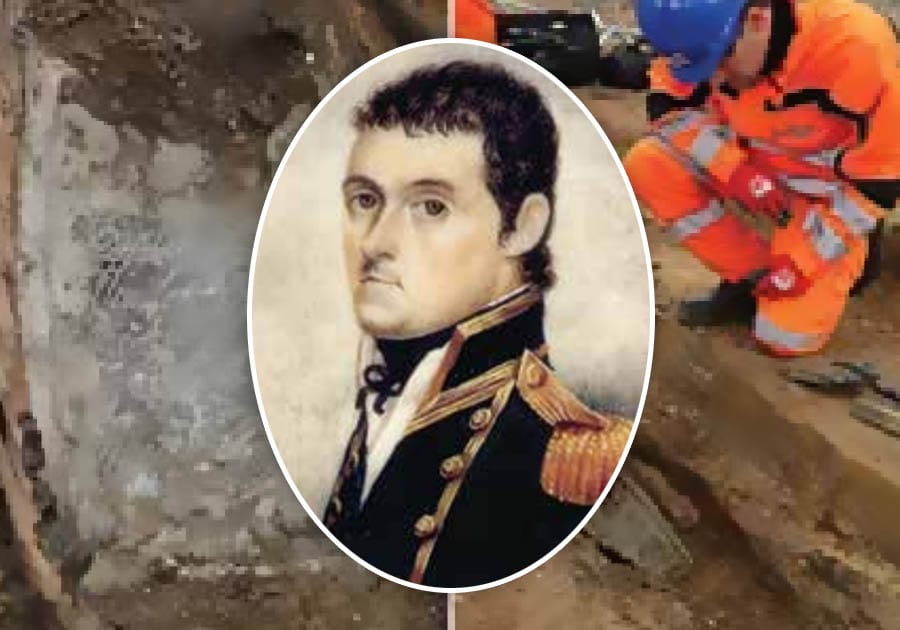By Barry Clark, Bribie Island Historical Society
A memorable day for the indigenous Joondooburri people of Bribie, 211 years ago, when they first saw a Sailing Ship coming to their island. The year was 1799. Some elders may have had memories or heard stories, of seeing a big boat way out to sea, 29 years earlier, when James Cook sailed past this coast in 1770.
The first fleet had arrived in Sydney in 1788, to establish a new Penal Colony. Small areas around Sydney were explored and farmed, but nothing much else was known of this vast land. It was thought that big rivers might flow from a vast inland sea, and young Matthew Flinders, aged 25, was sent north to explore bays and find rivers.
FLINDERS TO BRIBIE
Aboard the sloop, Norfolk, built by Convicts on Norfolk Island, Flinders and a small crew, including his brother, and an Aboriginal named Bongaree, sailed into Moreton Bay in July 1799.
On July 16th the first white footprint was made in the sand of Bribie Island, near the site of today’s Seaside Museum, where a commemorative stone and plaque can be seen. Hardly noticed these days, but it is Queensland’s equivalent of Australia Day.
Two engraved plates show Flinders’ face, and the Map he drew of Moreton Bay. The words on the plaque read;
Flinders sailed all around Moreton Bay, charted the islands, but failed to find the Brisbane River. He beached the Norfolk for repairs at White Patch, rowed up what he called the Pumicestone River, and climbed a Glasshouse Mountain. Flinders did not know that Bribie was an island, and nobody at that stage even knew that Australia was a huge island continent.
FLINDERS THE EXPLORER
Flinders had come to Australia, aged 21 in 1795, and circumnavigated Van Diemen’s Land (now Tasmania) in a small boat with George Bass. Flinders was a great cartographer and navigator and in 1803 became the first to sail right round, and map, the land previously named New Holland by early Dutch explorers. Flinders confirmed it was a huge island Continent, to which he gave the name TERRA AUSTRALIS, in a book about his journeys. Years later the name AUSTRALIA was officially adopted as the name for this continent.
Flinders took his cat TRIM with him on all of his travels. They travelled together for many years until dramatically interrupted when sailing back to England. Arriving on the island of Mauritius, not knowing that England was a War with France, he was taken prisoner and held for 7 years. Finally getting home in 1810 in failing health, he struggled to finish “Voyage to Terra Australis”, his book finally published a day before his death on 19 July 1814 at age 40.
FLINDERS REMAINS
Records of his death and burial 206 years ago were reviewed when major building work began at Euston Railway Station in London in 2019.
In a mass gravesite, where 60,000 largely unidentified bodies had been buried, records indicated the possible site of Flinders grave. Like finding a needle in a haystack, on a huge archaeologic dig site, the coffin plate and remains of Matthew Flinders were unearthed last year.
Monument at Banksia Beach, and the Bribie Arts Centre has a Matthew Flinders Gallery. There are many books about Flinders and his cat Trim, places and plants bear his name, and a bronze memorial to the welltravelled cat stands outside the NSW State Library.
FINAL TRIBUTE
Some recovered items from Flinders burial site may eventually come to Australia, to honour the man who first circumnavigated and named this continent.
This article reflects on two July dates in his life. First footing on Bribie Island on 16 July 1799 age 25, and his death on 19 July 1814 at age 40
